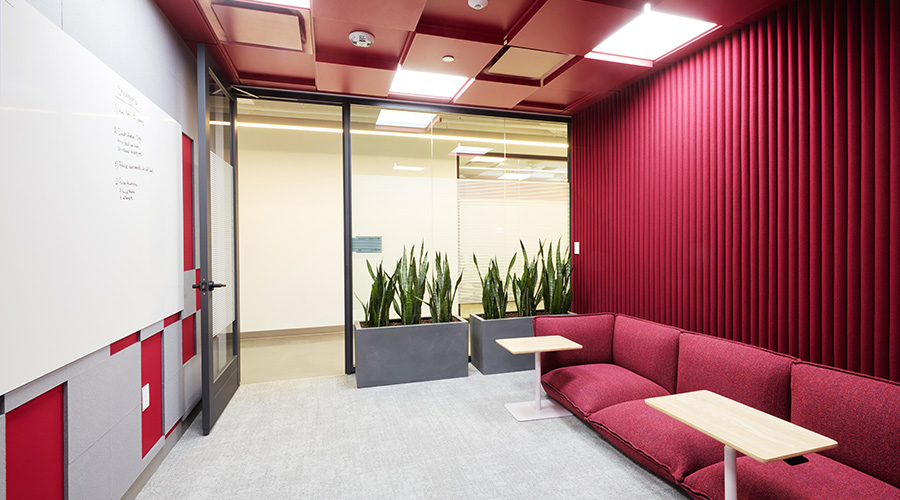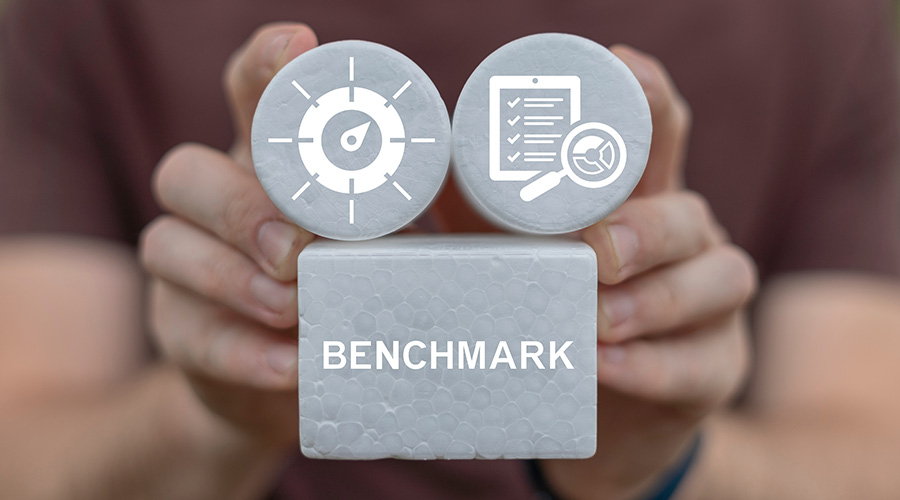Space Efficiency Drives Furniture Trends
The financial downturn has compelled many organizations to use their space as efficiently as possible. "Clients want less space and more from the space," says Polucci. "The universal themes are flexibility, collaboration and doing more with less."
Of course, few employees can spend all their work hours engaged in collaboration; most positions still require some heads down time, in which employees can work on their own. To allow for this, many layouts include small offices to which employees can retreat when they need to concentrate on a project.
However, they may need to reserve the room ahead of time if they're going to use it for more than an hour or two. "They can't claim it," Brown says. "Everyone has to use space and time efficiently."
Efficiency also is a driver behind the move to smaller individual spaces. Now, even an individual office or cubicle of 6-by-7 feet is on the higher end, Riley says. In contrast, 15 or so years ago, cubicle sizes could hit 8-by-12 feet, he says.
As the square footage of most individual work areas has dropped, the size of the furniture within it has had to get smaller as well.
Of course, this wouldn't be possible without similar changes in technology. Many office technologies have become smaller and thinner. For instance, earlier generations of desktop computers required about seven square feet of space, Bottom notes. "Now, you can hold an iPad, which is the size of an 8 ½-by-11-inch piece of paper," she says. Down the road, she says, "the tools we use to find data will become really small, fast and powerful." Increasingly, employees also will be cut loose from wires, she adds.
A focus on efficiency also is prompting some organizations to move to portable videoconferencing units, Riley says. These often have bar-height seating and flat screen monitors, and allow employees to plug in their laptops and conduct presentations. They can be placed where they're needed, reducing the need for conference rooms dedicated to videoconferencing.
Advances in electronic data storage also are prompting some organizations to reduce their use of overhead storage compartments for each employee, as well as file storage rooms. To be sure, the paperless office may yet be a future goal. At the same time, "paper storage isn't as important any more," Riley says. Reducing the space allocated to storing paper documents saves money, as well as square footage.
Employee Acceptance
Facility managers may notice a generational divide when it comes to employees' acceptance of a more open office environment. Younger employees — born roughly between the late 1970s and the late 1980s — tend to be more accepting, Riley says. They're used to working collaboratively, and tend to like being able to see around their work areas.
However, for many employees who entered the workforce when graduating to an office of one's own was a career goal, the shift to more open spaces can take some adjustment. Today, when offices are used, they tend to be related to an employee's function, rather than his or her title or level of seniority, Riley says. As a result, even a relatively junior employee in human resources may need an office or easy access to one, while a senior marketing staffer may have little need for one.
Some employees also may be concerned about noise and privacy, Riley says. Here, it's important to set the record straight. While employees often assume that a more open environment is noisier, that's not automatically true. "People adjust their behavior," Riley says. When panel heights are 96 inches, people tend to talk louder, figuring they won't be overheard. In an open environment, they're more likely to modify their voices.
Even so, change management is critical in helping employees get accustomed to a more open office design, Riley says. This may mean allowing people to provide some input during the design process. Where possible, creating a mock office that gives them an idea of how the new space will look and feel also can be helpful. "The work environment is where people spend a great deal of time," Riley says. "To have it (the environment) dictated versus being part of a democratic process makes a big difference in how it's received."
Another key to a successful work environment is recognizing that no one environment fits every organization, Polucci says. What's more, the old assumptions don't always hold up. Some traditional firms are moving to open settings, with glass offices to provide privacy when it's needed.
The goal? "Spaces that are beautiful, functional and easy to use," Brown says.
Karen Kroll, a contributing editor for Building Operating Management, is a freelance writer who has written extensively about real estate and facility issues.
Related Topics:












